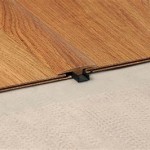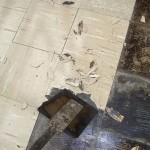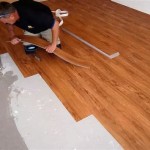Hardwood Flooring Tips and Tricks: Achieving Lasting Beauty and Durability
Hardwood flooring remains a popular choice for homeowners due to its aesthetic appeal, durability, and potential to increase property value. However, maintaining hardwood flooring requires understanding specific installation techniques, choosing appropriate cleaning methods, and implementing preventive measures to avoid damage. This article will explore essential tips and tricks for ensuring the longevity and beauty of hardwood floors.
Proper Acclimation: The Foundation for Stability
One of the most critical, yet often overlooked, aspects of hardwood flooring installation is the acclimation process. Hardwood is a natural material that expands and contracts in response to changes in humidity and temperature. Failing to properly acclimate the flooring can lead to warping, gapping, and buckling after installation.
The acclimation process involves allowing the flooring to adjust to the environmental conditions of the room where it will be installed. Ideally, the hardwood should be stored in the room for several days, or even a week, prior to installation. This allows the wood to reach equilibrium moisture content (EMC) with its surroundings.
The specific timeframe for acclimation will depend on several factors, including the type of wood, the climate, and the existing humidity levels in the room. It's crucial to consult the manufacturer's instructions for specific recommendations. In general, a humidity level between 30% and 50% and a temperature between 60°F and 80°F are considered ideal during acclimation and throughout the life of the floor.
Using a moisture meter to measure the moisture content of both the subfloor and the hardwood flooring is highly recommended. The difference in moisture content between the subfloor and the flooring should be within an acceptable range, typically specified by the manufacturer, before proceeding with installation. Failure to address a high moisture content in the subfloor before installation will almost certainly lead to problems down the line.
For engineered hardwood flooring, acclimation is still important, although it may not require as much time as solid hardwood. Engineered wood is less susceptible to moisture fluctuations due to its layered construction. However, acclimation is still necessary to minimize movement and ensure a stable installation.
Effective Cleaning and Maintenance Strategies
Proper cleaning and maintenance are essential for preserving the beauty and extending the lifespan of hardwood floors. Regular cleaning prevents the buildup of dirt and grime, which can scratch and dull the finish. However, harsh chemicals and abrasive cleaning methods can damage the floor's surface.
The first line of defense against dirt and scratches is regular sweeping or vacuuming. Use a soft-bristled broom or a vacuum cleaner with a felt brush attachment to remove loose dirt and debris. Avoid using vacuums with beater bars, as they can scratch the finish.
For deeper cleaning, use a hardwood floor cleaner specifically designed for the type of finish on your floor. These cleaners are typically pH-neutral and won't damage the finish. Follow the manufacturer's instructions for application. Avoid using excessive water, as it can seep into the seams and cause damage. A slightly damp mop is sufficient.
Never use abrasive cleaners, ammonia-based cleaners, or vinegar on hardwood floors. These substances can strip the finish and leave the floor looking dull. Also, avoid using steam mops, as the excessive moisture can penetrate the wood and cause warping.
In addition to regular cleaning, preventive maintenance is key. Place mats at entryways to trap dirt and moisture. Use furniture pads under the legs of furniture to prevent scratches. Avoid wearing shoes with high heels or cleats on hardwood floors. Trim pet's nails regularly to minimize scratching.
For hardwood floors in high-traffic areas, consider applying a refresher coat of finish every few years. This will help protect the floor from wear and tear and maintain its shine. Consult with a flooring professional to determine the best type of finish for your floor.
Stains and spills should be cleaned up immediately to prevent them from penetrating the finish and causing permanent damage. Use a soft cloth to blot the spill, working from the outside in. For stubborn stains, consult with a flooring professional for recommended cleaning solutions and techniques.
Addressing Common Hardwood Flooring Issues
Despite proper installation and maintenance, hardwood floors can still experience common issues such as scratches, dents, and water damage. Understanding how to address these problems can help homeowners maintain the appearance and integrity of their floors.
Minor scratches can often be repaired with a touch-up kit specifically designed for hardwood floors. These kits typically include a stain marker or crayon that matches the color of the floor. Carefully apply the touch-up material to the scratch and buff it gently with a soft cloth.
For deeper scratches or dents, a wood filler may be necessary. Clean the area around the damage and apply the wood filler according to the manufacturer's instructions. Allow the filler to dry completely and then sand it smooth. Apply a stain that matches the color of the floor and seal with a clear finish.
Water damage is a more serious issue that requires immediate attention. If the floor is exposed to water, dry it as quickly as possible with towels and a dehumidifier. Remove any rugs or furniture that may be trapping moisture. If the water damage is extensive, the floor may need to be professionally repaired or replaced.
Gapping between boards is another common issue, particularly in dry climates. This is often caused by the wood shrinking due to low humidity. Increasing the humidity in the room may help to reduce the gapping. A humidifier can be used to add moisture to the air. In severe cases, the gaps may need to be filled with wood filler.
Squeaky floors can be annoying and distracting. They are often caused by loose nails or screws in the subfloor. Identifying the source of the squeak and securing the subfloor can often resolve the problem. In some cases, it may be necessary to add shims between the floor joists and the subfloor to eliminate movement.
Sunlight can cause hardwood floors to fade or discolor over time. To minimize this effect, use window coverings such as blinds or curtains to block out direct sunlight. Rotate rugs and furniture periodically to ensure even exposure to sunlight.
Finally, regularly inspect hardwood floors for any signs of damage or wear and tear. Addressing problems early can prevent them from escalating and becoming more costly to repair. Consulting with a qualified flooring professional can provide valuable advice and ensure that repairs are done correctly. This preventative approach will ensure a long-lasting and beautiful hardwood floor.

How To Install Hardwood Flooring For Beginners
:strip_icc()/101206836-29035ec5a7c34a12a4c00cd5101818d4.jpg?strip=all)
How To Install Hardwood Floors

How To Do Hardwood Floors Tips And Tricks

How To Lay Engineered Timber Floor Guide Fantastic Handyman Au

Flooring Tips Tricks Hardwood Floor Care

Gluing Hardwood Floors Your Comprehensive Installation Guide

How To Install Hardwood Flooring Episode 2 Installation

Caring For Wood Floors Tips And Tricks Vantia Hardwoods Interiors

Diy Engineered Hardwood Floor Installation Guide Four Generations One Roof Blog

15 Essential Tips Tricks For Your Hardwood Floors Cleaning Wood Floor Cleaner
Related Posts








